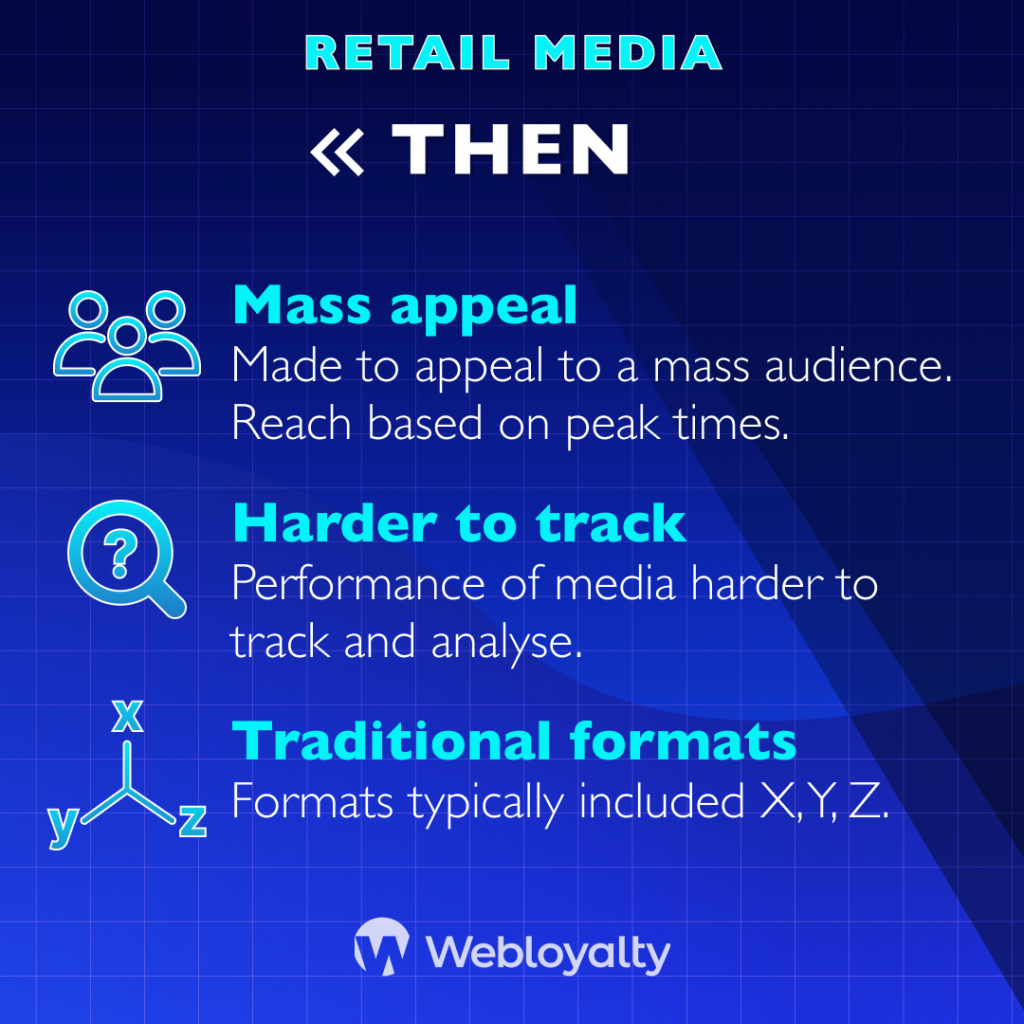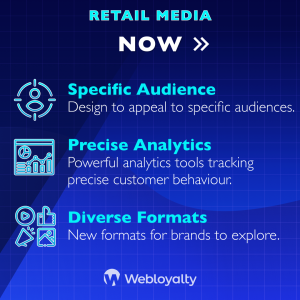Without a doubt, retail media is weaving its way through consumers’ lives more than ever, and in ways that they simply cannot avoid. So, what is retail media exactly? Retail media can be any kind of promotional marketing material, placed strategically to target a consumer in a retail environment. We have seen retail media change in a rapidly evolving landscape that has transformed the likes of physical promotional material to digital placements that are fuelled by better targeting consumers in the most optimal moment of purchase, and through an extensive collection of data.
The goal behind executing retail media in a specific space is for a brand to achieve greater awareness of their products or services and target a specific audience through the decision of where they decide to place the media. We have come a long way in just how far we can take strategically placing, optimizing, and targeting our audience with retail media, and fast. So, what types of retail media exist? How exactly is the landscape of retail media evolving? How did we get to this point and why does this all matter? First, let’s dive into the different types.
Types of Retail Media Advertising
In-Store
Any advertisement you see when you visit a store, such as product displays, screens with display ads, digital signs and front window displays.
Search
An advertisement that pops up when searching on the internet. Based on what is searched, certain keywords will prompt a digital ad that targets the consumer.
On-Site
On-site retail media advertising can be any ad that appears either on a particular retailer’s website or app (includes social platforms). This could include both ads that result from search on the site or display such as banner ads on the home page of a website.
Off-Site
This form of retail media is becoming increasingly interesting to businesses. The concept of off-site advertising involves collaborating with partners and paying them to have your ads display on third party websites. We are seeing a rapid increase in not only the use of off-side third-party ads, but the amount of spend associated with them – a big opportunity for additional revenue streams to be generated.
The Major Difference of Retail Media THEN (Before the 2000’s) and NOW (2000 and Beyond)

THEN, retail media was made to appeal to mass audiences.
THEN, the individual performance of the media and ads was harder to track and analyse.
THEN, retail media did not have a complex analytic journey – the basis of its success was dependent on the average / predicted number of viewers within a broader audience base.
THEN, the more money you spent guaranteed your ad to be placed at the right moment, which was mostly based on viewer watch peak times.
THEN, retail media followed much more traditional methods – those popular included samples, coupons, infomercials, TV commercials, print ads in magazines and newspapers, mail ads and radio ads.
THEN, retail media was primarily based in physical locations – except for some digital placements with the rise in technology.

NOW, retail media is created to appeal to specific targeted audiences.
NOW, the internet has proven itself as a game changer in its development of powerful analytics tools that track customer behaviours on the backend of websites.
NOW, there is a larger selection of options available for brands and businesses to explore in utilizing retail media.
NOW, we can distinguish retail media in the digital space as three different types – paid, owned, and earned.
NOW, Retail media networks are being established by key-playing e-commerce businesses like Amazon who are trailblazing successful retail media and secondary revenue streams.
Why Does Retail Media Matter Anyway?
In changing and challenging times within the economic landscape, businesses are exploring other avenues to increase and diversify their revenue streams. Particularly, smaller businesses are finding it harder and harder to compete with bigger brick and mortar businesses such as Amazon, John Lewis, M&S and more. However, there is one thing that they have in common, which is that they are eager to understand how to leverage their loyal customers data and understand their purchasing journey to better tailor advertising within their activity and digital purchasing habits. Gone are the days of media placements that were set to work best with mass audience settings. Now, we are seeing a shift with ads becoming more targeted than ever – an insightful observation that has intrigued businesses of all sizes.
A Digital Evolution
The retail media landscape is rapidly expanding in the digital realm because its potential audience base is online. A substantial portion of what makes up retail today is E-commerce sites and social media. Since the pandemic, the world has seen a 25% increase in e-commerce sales happening online. Not to mention that a whopping 57% of global consumer spending is online.
This creates an environment for massive revenue potential for businesses, and many are now trying to navigate their way through the best strategies for how to target their ideal consumer audience. Notably, there are some businesses that have trailblazed their way through this new era and have developed their own networks, achieving record-breaking revenue gains for the businesses in recent years, setting an example of what success could look like for others.
Stay tuned for our next blogs as we dive into the top retail media trailblazers and what they have done to achieve secondary revenue for their business, as well as the current challenges and trends we’re seeing in the space. If you’re interested in learning more about unique ways that UK businesses have explored new areas of business overall, check out our latest report, “Diversifying Revenue Streams” which features some of the UK’s top minds in the retail sector from brands such as Uber, Cook, OnBuy and more, and their experience with how they’ve built secondary revenue streams to excel their business forward.